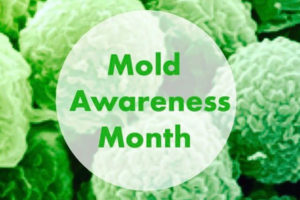When customers ask about mold, are you able to answer their questions? We’ve put this article together to help you answer your client’s questions with confidence!

What is Mold?
Molds are microscopic organisms present everywhere, both indoors and outdoors. Molds are fungi which break down dead material and recycle nutrients in the environment. Molds need moisture and an organic food source (e.g., wood, paper) to grow. Molds gradually destroy whatever surface they grow on. Visible mold growth is typically discolored green, gray, brown, or black.
Why is Mold a Problem?
Mold is bad for your health. Molds release tiny, lightweight spores which travel through the air. Indoor mold growth is undesirable and potentially dangerous, and can cause: inflammation, rash, allergy, congestion, headaches, and infection.
When to Test for Mold?
Mold often is caused or accelerated by moisture. Therefore, many people test for mold after a water-related issue, e.g., heavy rain causes water in the basement, dishwasher floods the kitchen, washing machine floods the laundry room, etc. People also test for mold when they smell an unusual odor, see discolored spots, or become sick for no apparent reason.
What’s the Best Way to Assess Mold?
Mold testing, combined with infrared scans and visual inspection methods, is the best non-invasive method to assess the extent and types of mold in a home.
Our Mold Assessment, offered in select markets, delivers a comprehensive understanding of the types and extent of mold in a home. We conduct a visual examination, air sampling, infrared inspection, and in some cases, surface sampling. We ship samples to a qualified lab for results and analysis and our hygienist reviews results. If we identify issues, we provide you with specific recommendations and next steps.

